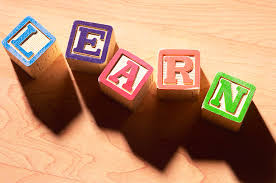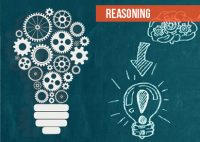Tips, tricks and shortcuts in Alphabet Test : Learn Series
Want to Become a Bank, Central / State Govt Officer in 2020?
Join the Most awarded Coaching Institute & Get your Dream Job


Now Prepare for Bank, SSC Exams from Home. Join Online Coure @ lowest fee
Lifetime validity Bank Exam Coaching | Bank PO / Clerk Coaching | Bank SO Exam Coaching | All-in-One SSC Exam Coaching | RRB Railway Exam Coaching | TNPSC Exam Coaching | KPSC Exam Coaching
Tips, tricks and shortcuts in Alphabet Test : Learn Series
Dear Bankersdaily Aspirant,
Here we are posting our Second Article in Lear Series in Reasoning Section. The first article covers the concepts of Direction and Distance. This series surely helpful for the beginners who are preparing for Bank Exam and for others who already preparing can use this article for revising the Basic Concepts.
Introduction:
This article covers the topic of Alphabet Test questions based on which are asked under the reasoning section in various competitive exams like IBPS Clerk, SBI Clerk, SSC CGL, Placement Aptitude, IBPS PO, SBI PO, NICL AO, LIC AAO, SBI Associate Clerk, SBI Associate PO, CAT and others.
Under this we deal with different types of questions based on English Alphabets, which could be asked in upcoming IBPS RRB, PO and Clerk.
Important Facts of Alphabet Test:
1. Position number of letters in English

2. Position number of letters in English alphabets in reverse

3. We know A, E , I, O and U are vowels of English alphabet and remaining letters are consonants of English
4. A → 4 M (A to M) letters are called first half of English
5. N → 4 Z (N to Z) letters are called second half of English
6. To the left means Z → A (Z to A)
7. To the right means A → Z (A to Z)
8. From A → Z (A to Z) letters are called left to right of English
9. From Z → A (Z to A) letters are called right to left of English alphabets.
Types of Question Based on Alphabet Test
There are four types of questions based on Alphabet test:
Type- I Arrangement According To the Dictionary
Arranging words in alphabetical order implies ‘to arrange them in the order as they appear in a dictionary’. For this arrangement, first we shall consider the first letter of each word. Arrange the words in the order in which these letters comes in the English alphabets.
Example 1: The following four words are arranged in alphabetical order, which word will come in the second place
(a) Electric
(b) Elector
(c) Elect
(d) Electrode
Arranging the words in alphabetical order, we have : Elect, Elector, Electric, Electrode. Hence, Elector will come in the second place. Example 2: Arrange the given words in alphabetical order and choose the one that comes at the third place? (a) Bathing (b) Banking (c) Backing (d) Banishing Hence, Banking will come in the second place. In these types of questions, a jumbled sequence of some letters, numbers and symbols are given. Sometimes only English alphabets from A to Z are given. Example (Q. 3 to 7): Study the following arrangement carefully and answer the questions given below. Example 3: How many such symbols are there in the above arrangement, each of which is immediately preceded by a number and immediately followed by a letter? (a) None (b) One (c) Two (d) Three Example 4: Three of the following four are alike in a certain way based on their positions in the above arrangement and so form a group. Which is the one that does not belong to that group? (a) D%© (b) 58R (c) T V 8 (d) E%$ Example 5: If all the symbols in the above arrangement are dropped, which of the following will be the twelfth from the left end? (a) 4 (b) K (c) 2 (d) U Answer (c) After droping all the symbols, the given arrangement order is F 3 9 H A D I 4 E M K 2 U R P 5 W 8 1 T J V 7 Twelfth from the left Example 6: How many such consonants are there in the above arrangement, each of which is immediately preceded by a number and not immediately followed by a symbol? (a) None (b) One (c) Two (d) Three In these types of problems, a certain word is given and candidates are required to answer asked, how many letters in the word is as far away from the beginning of the word as, it is from the beginning of the English alphabet. Sometimes, a certain word is given and then asked how many letters remain same in its position if they arrange in alphabetical order. Sometimes, a certain word is given and asked, if vowel and consonants constitutes Example 8: How many such pairs of letters are there in the word CHANNEL each of which has as many letters between them in the word as in the English alphabets? (a) None (b) One (c) Two (d) Three So, such number of pairs are: AC, LN Example 9: How many such letters are there in the word PMCLNOB remain same in its position, if they are arranged in alphabetical order? (a) None (b) One (c) Two (d) Three P M C L N O B B C L M N O P So, such type of letters are N and O. Example 10: Each vowel of the word GLADIOLUS is substituted with the next letter of the English alphabetical series and each consonant is substituted with the letter preceding it. How many vowels are present in the new arrangement? (a) None (b) One (c) Two (d) Three G L A D I O L U S F K B C J P K V R So, none such vowels are present in the new arrangement. In these types of problems or questions, a certain rule is given in questions and candidates are asked. choose the correct alternatives that follow this given rule. Example 11: Find out the correct alternatives in which numbers of letters skipped in between adjacent letters in the series is two? (a) LORTW (b) GJMPS (c) KNPSV (d) EHKLO Article Courtesy: Mr. Nareshkumar Reasoning Trainer RACE Institute
Type 2 Alpha-Numeric Sequence
![]()
Type 3 Letter-Word Problems

Type 4 Rule Detection

Next Article:
Number Ranking Part 1
Other Learn Series Articles
Shortcuts Tricks And Tips In Direction & Distance
How To Solve Time And Distance Questions?





6 comments
Is the solution of 6th ques crct?
Updated. Please check…..
Really great job done here. Its very useful.
We are glad that it helped your preparations. We will convey the wish to the author.
Really it’s very easy fa us to learn
Very useful thank u sir